Frank Hill's summoning up of sunspots from the vasty deep of the Sun's convection zone reminds me of some Shakespeare (Henry the Fourth):
Glendower:
I can call spirits from the vasty deep.
Hotspur:
Why, so can I, or so can any man;
But will they come when you do call for them?
Frank Hill says that his sunspots will be with us in three to six months. The Ap Index suggests otherwise. There is a correlation between the geomagnetic indices (aa Index and Ap Index) at minimum and the amplitude of the following solar cycle. Earlier this year I produced this graph of the Ap Index plotted against solar cycle maxima when I thought that the Ap Index would bottom out at three, giving a maximum amplitude of 25:
This is June and the monthly average of the Ap Index is 3.1. What is interesting from that graph is that there will be no sunspots if the monthly Ap Index goes below 2. The heliospheric current sheet is telling us that the month of minimum is possibly a year off and the Ap Index is showing no signs of pulling out of its glide slope of 0.28 per month, as shown in this graph:
The Ap Index enters the no sunspots zone in October at its current glide slope. Will it pull out in time? The Sun is bleeding magnetic flux (for a very good reason), so I don't think so.
Frank Hill has shouted (his words) that there is no correlation between solar activity and climate. Back in a time when those who studied the Sun were armed with not much more than an enquiring mind, William Herschel in 1801 noted the relationship between the number of sunspots and wheat prices. When there were fewer spots, wheat prices were higher. To bring that up to the current day, when there are no spots at all, wheat prices will be the highest ever.
Back to Shakespeare: Hotspur has some good advice for those who study the Sun and draw implications for public policy:
Hotspur:
And I can teach thee, coz, to shame the devil -
By telling the truth. Tell truth and shame the devil.
Leif Svalgaard writes in with some graphs of his own:
Using Aa which goes much further back than Ap, the relationship between Aa and the size of the next cycle has been used by many people to forecast the next cycle. [one of the standard methods]. The data point with the red dot is the predicted Rmax for SC/24 using the polar fields and is plotted at the 2009 yearly average so far of Aa [9.1]
No spots for Aa = 2.4
Aa = 0.2318 (B Vo2)0.9478
Where B is the interplanetary magnetic field in nT and Vo is the solar wind speed in 100 km/s units. E.g. for B = 4 nT and V = 350 km/s, thus Vo = 3.5, we have Aa = 8.55 and Rmax = 57.
Ap is about half of Aa, but the relationship is not quite linear: Ap = 0.2925 Aa1.204
So Aa = 8.55 corresponds to Ap = 3.87.
If we plot Rmax for the previous cycle (purple plusses) there is no correlation
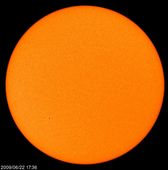
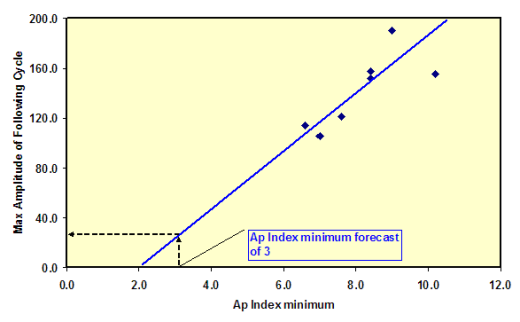
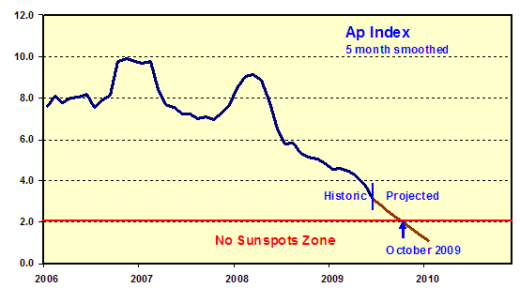
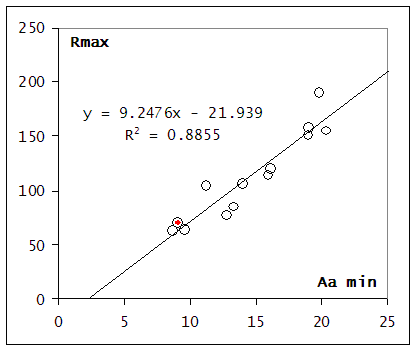
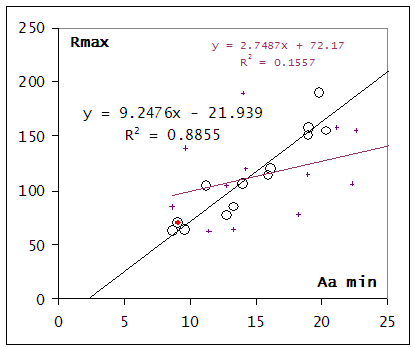



what about the predicted sunspot of july 7.... channeling by the cropcircles makers? will this sunspot occur? I bet it will in the late afternoon UMT time.